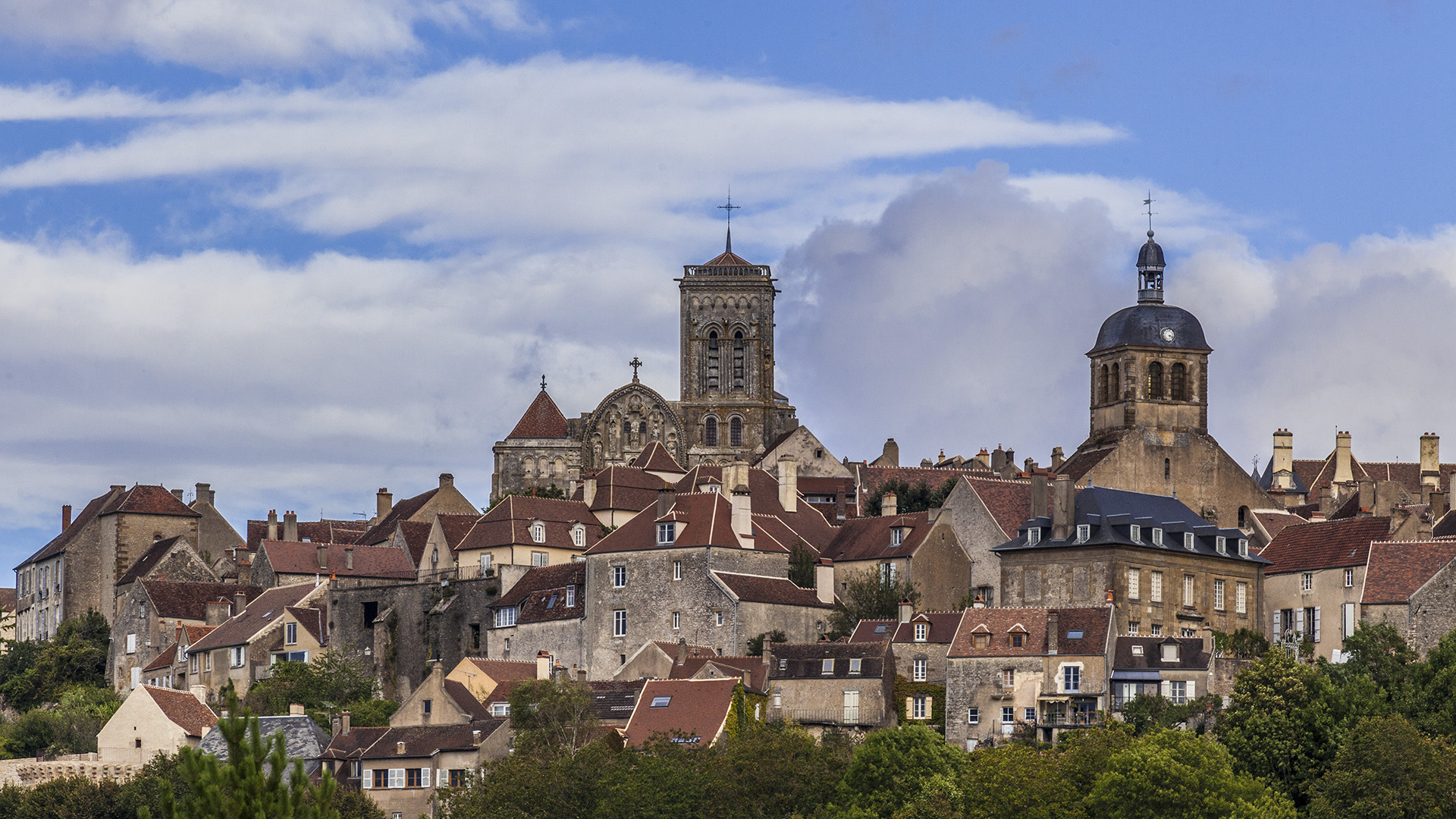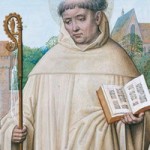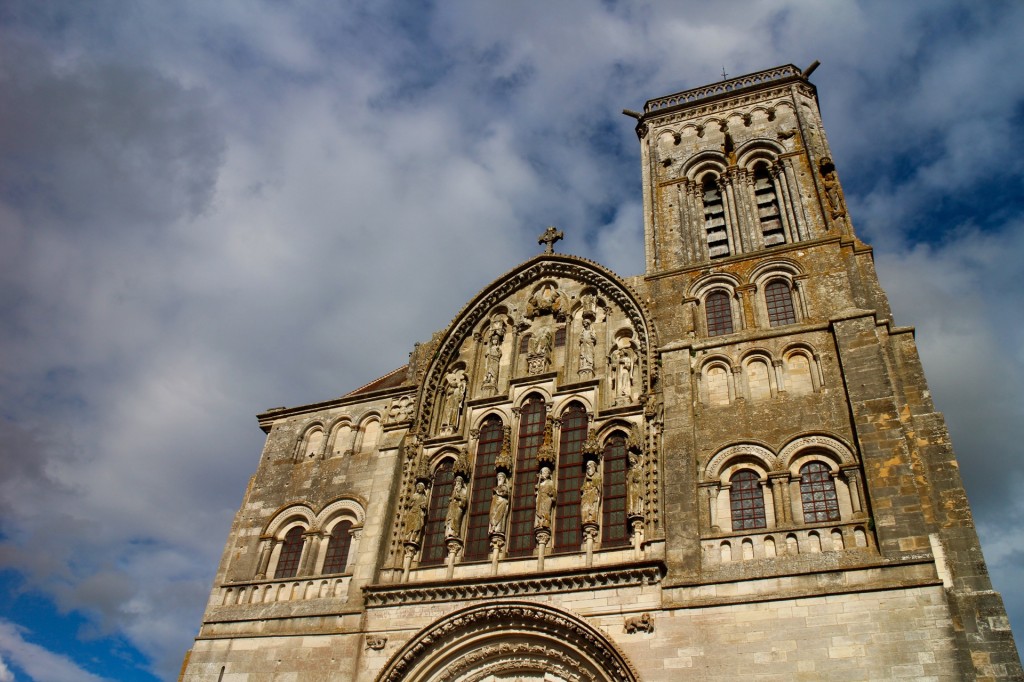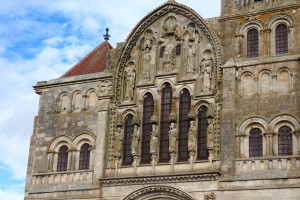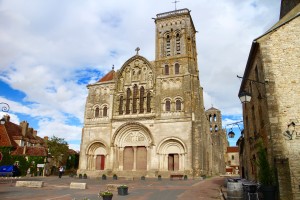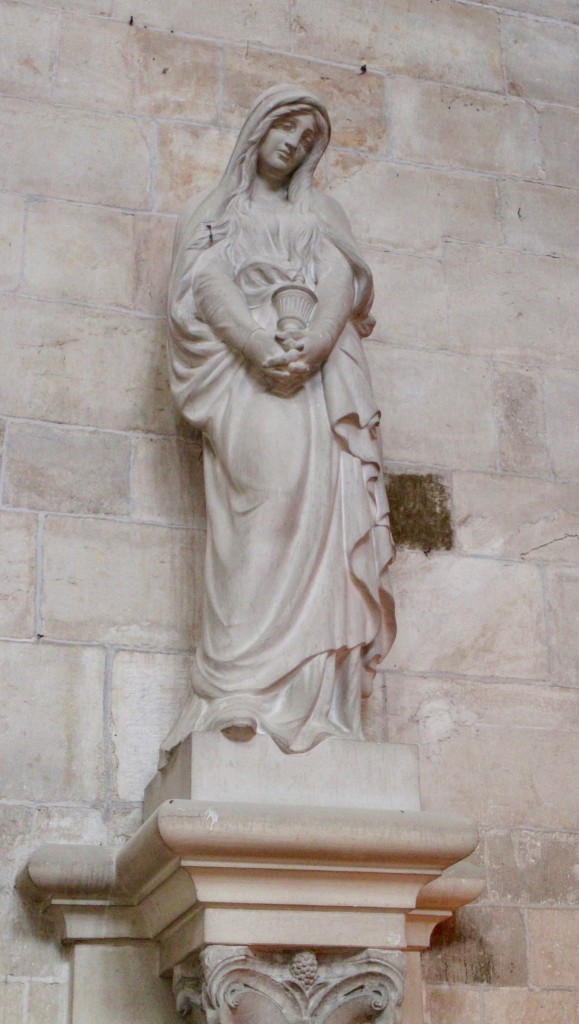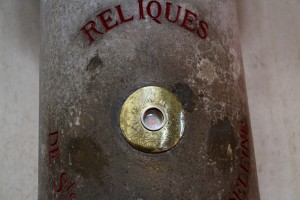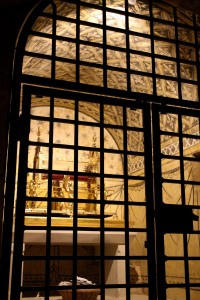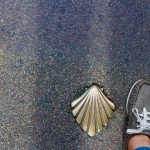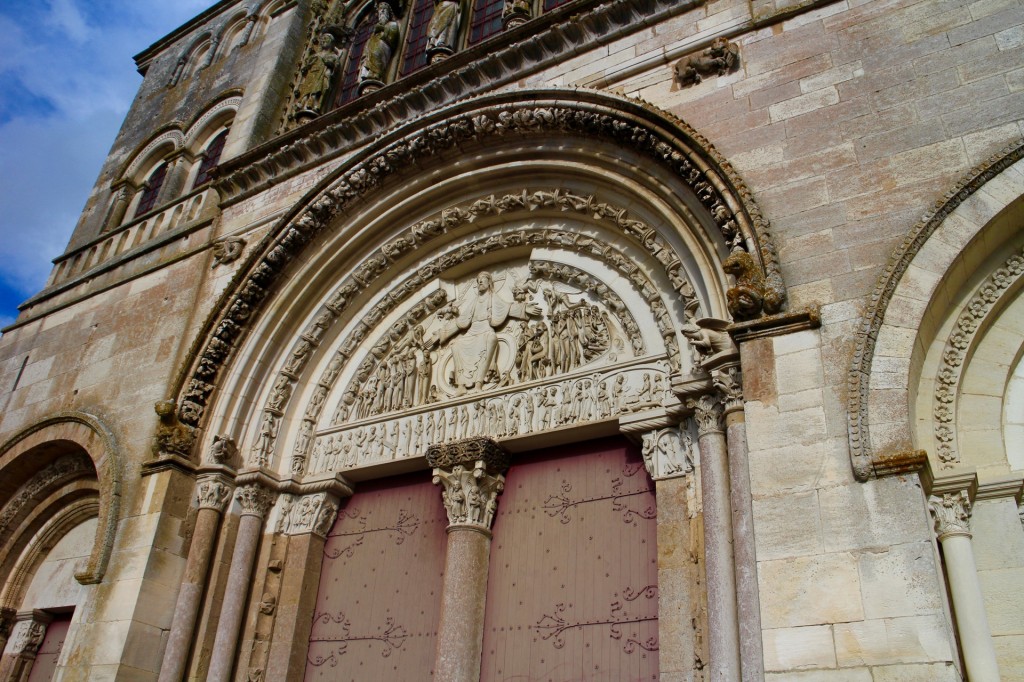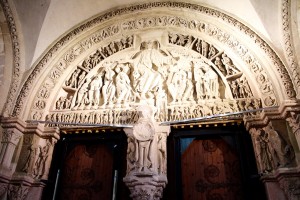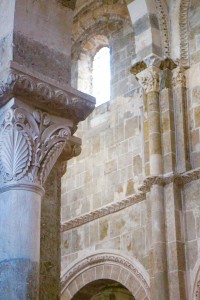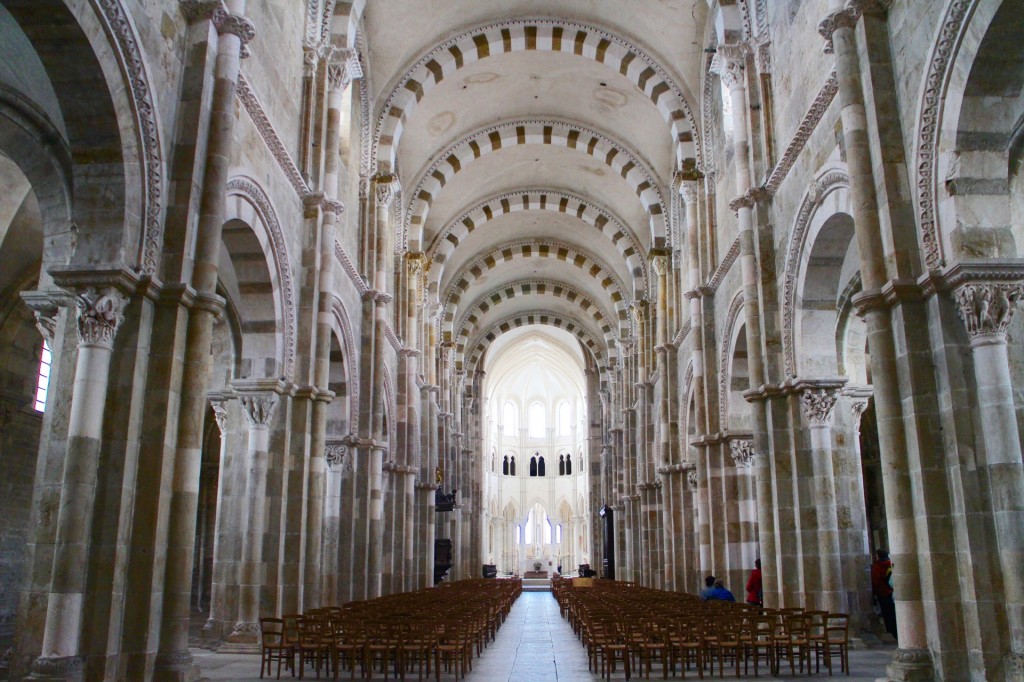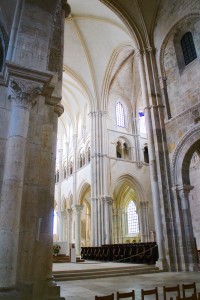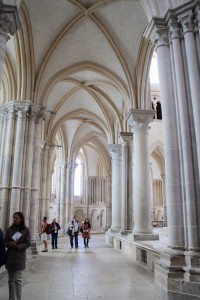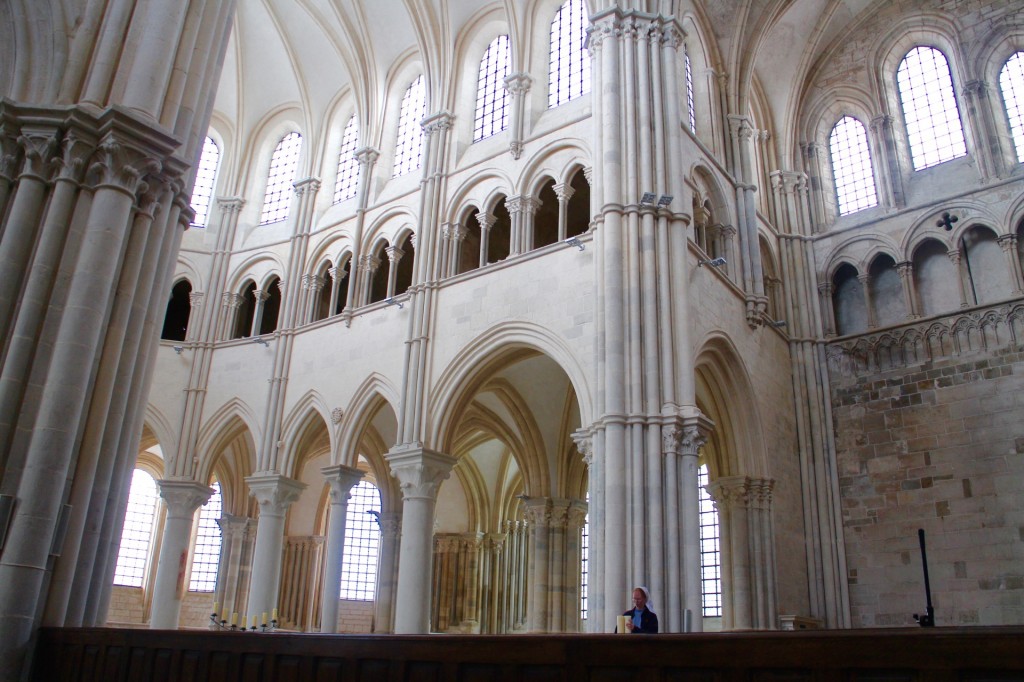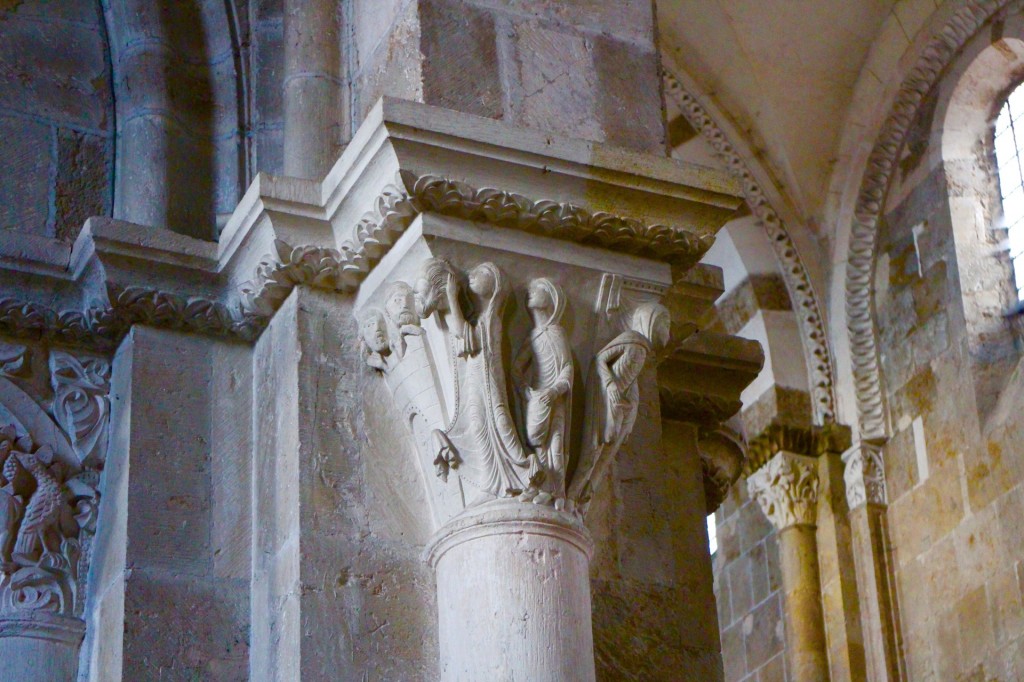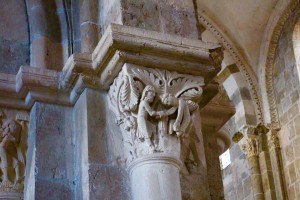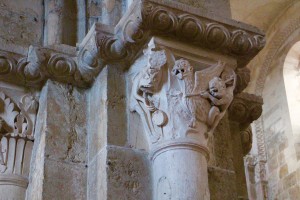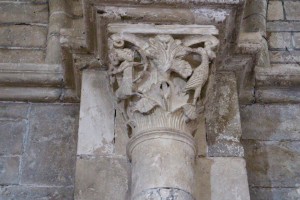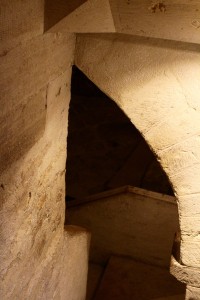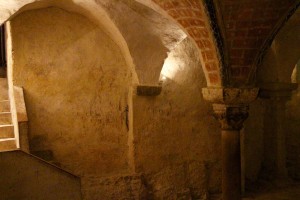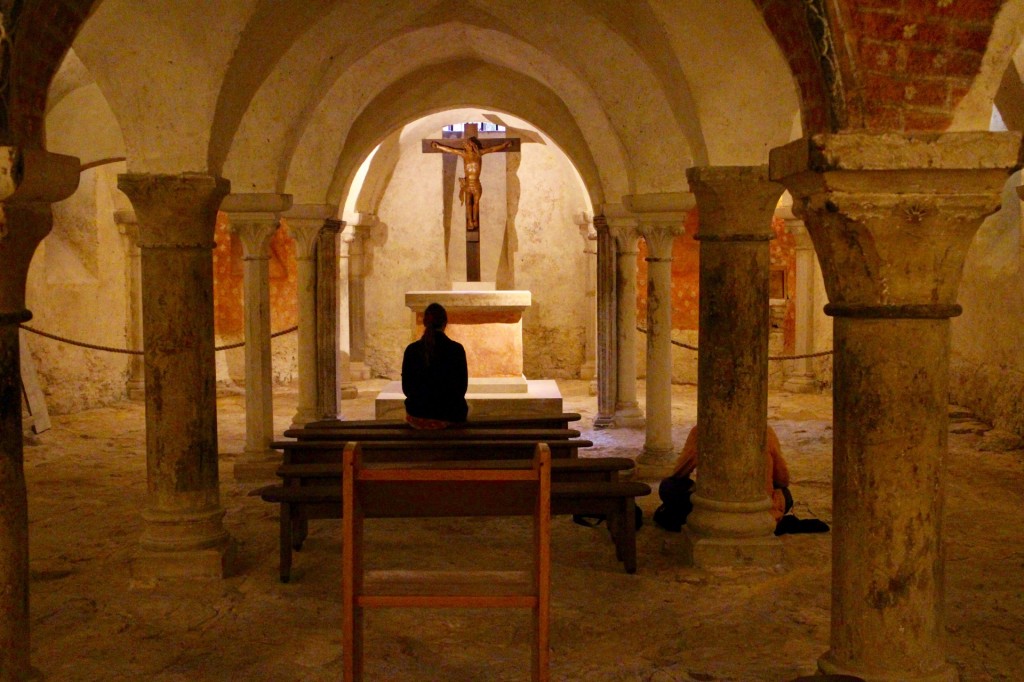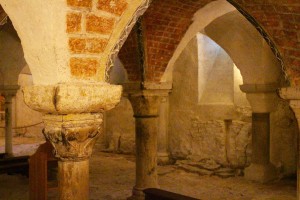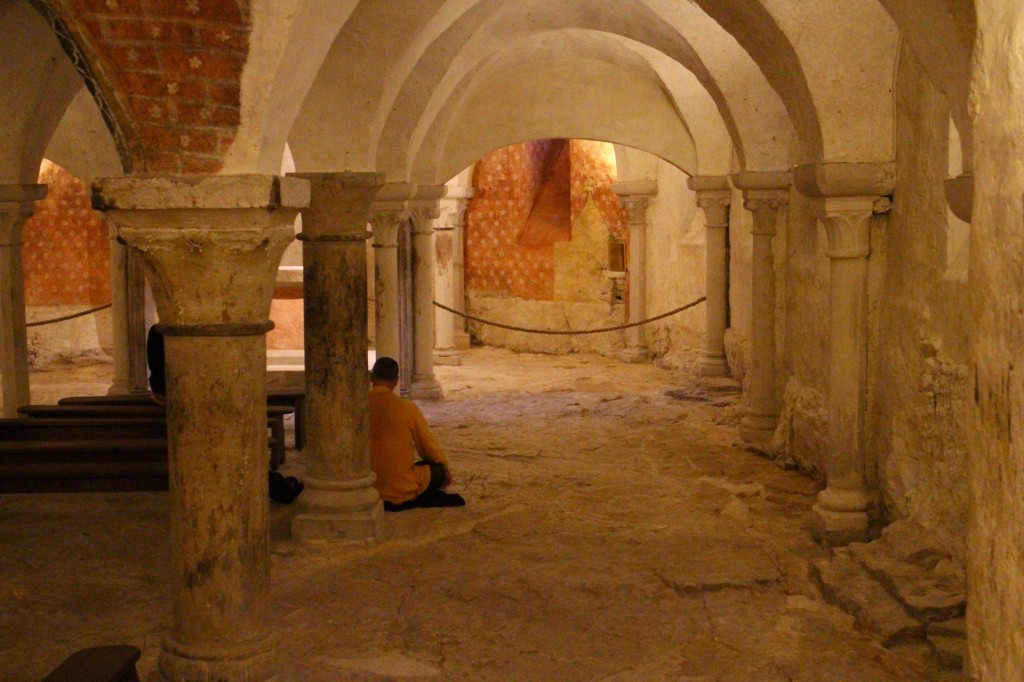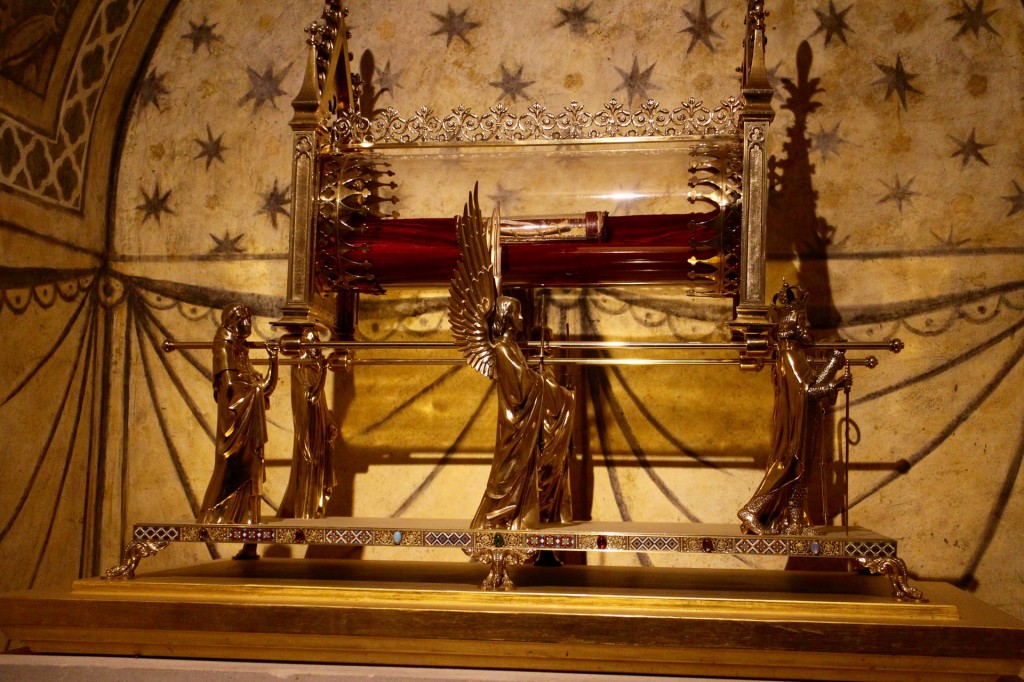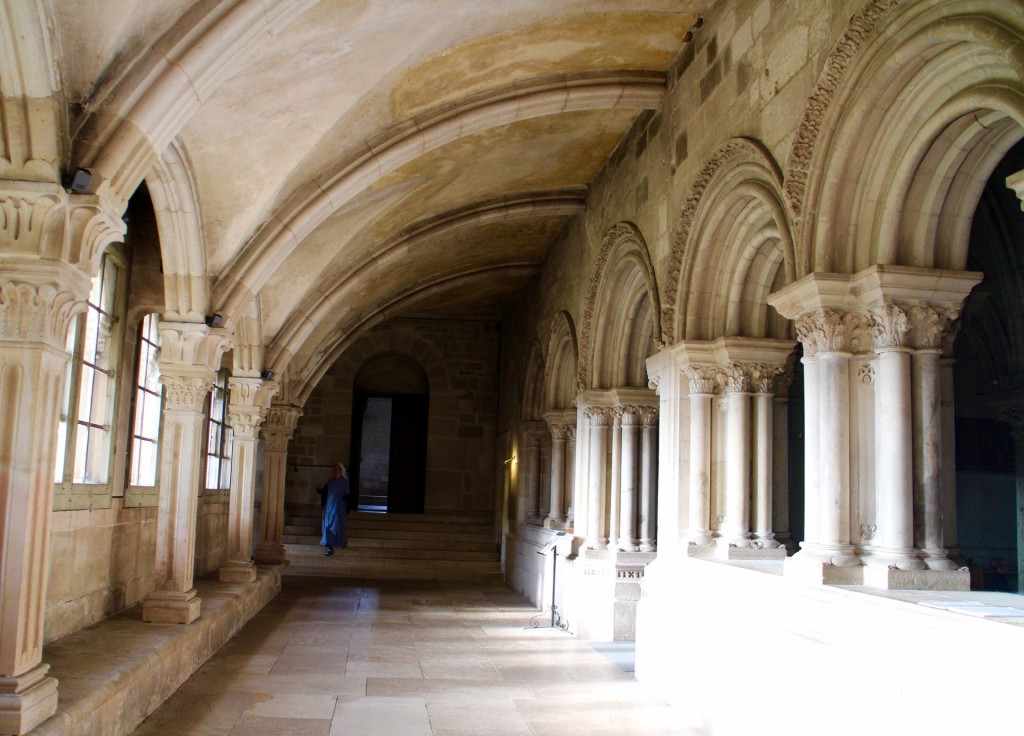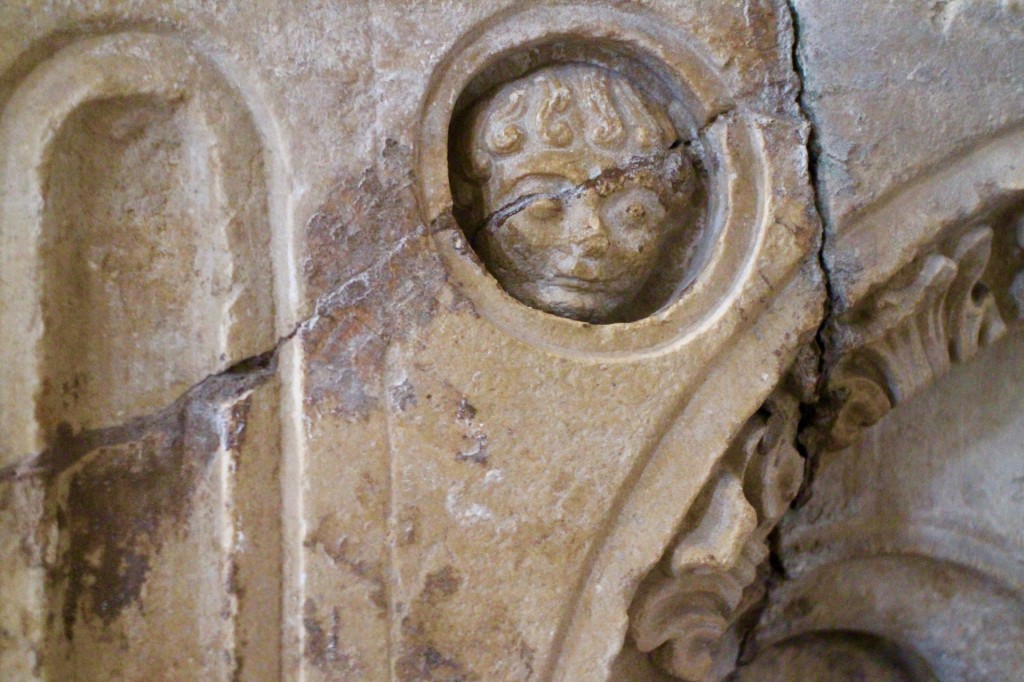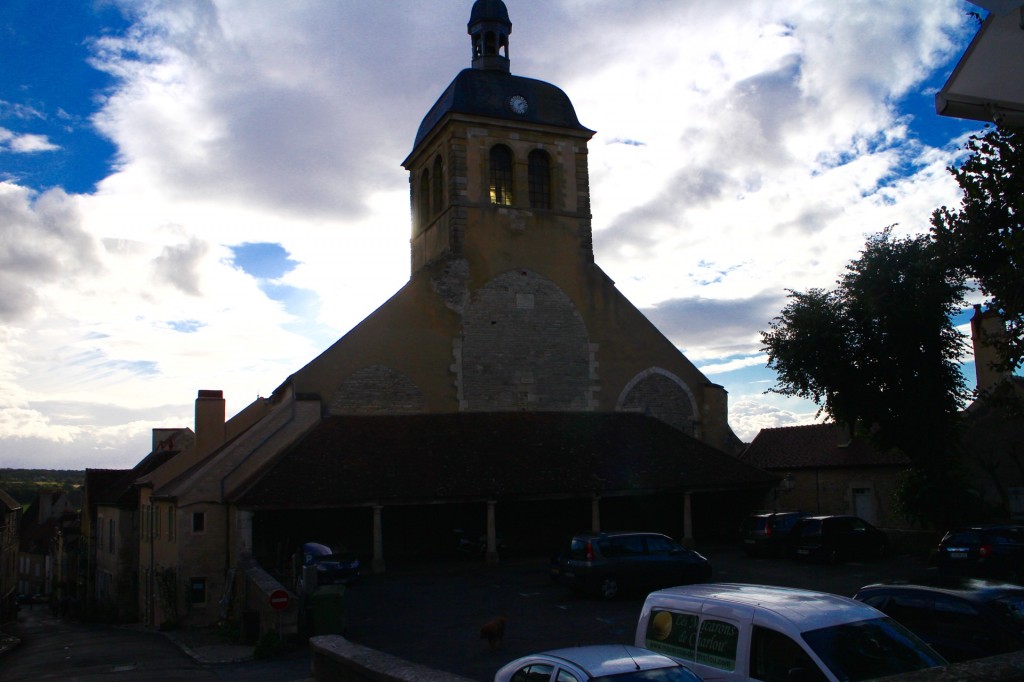(The photos can be clicked and enlarged)
Vézelay is situated in Burgundy, on a hill in the north-western tip of the Morvan, between Avallon and Clamecy. The distance to Auxerre is about 45 km.
In this city, on Easter Sunday 1146, Bernard of Clairvaux called for the second crusade on the opposite hill of Asquin, where hundreds of thousands of soldiers and peasants had gathered. At his side were Louis VII, his wife Alienor and the Counts of Flanders and Toulouse.
In 1166, Thomas Becket, the Archbishop of Canterbury, exiled here, cast a spell over King Henry II. Thirty years later, in 1190, at the beginning of the third crusade, King Philip II and Richard the Lionheart met in Vézelay.
The history of Vézeley goes back to an abbey founded in the 9th century by a prince named Girart de Roussilon. The original monastery, inhabited by nuns, had to be moved to a neighbouring hill after being plundered by the Normans.
The famous Basilica Sainte-Madeleine
… was built in the 12th century (High Romanesque and Gothic), but later devastated by religious wars and revolution. In 1819, the basilica was also struck by lightning and then fell into complete decay – until Prosper Mérimée (one of Carcassonne’s rescuers) drew the authorities’ attention to the terrible situation. Another of Carcassonne’s rescuers, the then 26-year-old architect Viollet-le-Duc, ventured to restore the building. He succeeded in saving the basilica and making it the jewel it is today.
The façade, however, is supposed to be only a reflection of the medieval building, as it was completely recreated by Le Duc according to old models. The basilica has been a UNESCO World Heritage Site since 1979.
The patron saint Mary Magdalene
made Vézelay an important place of pilgrimage and the starting point of one of the routes of the Way of St James to Santiago de Compostela. The name of Vézeley became as famous as Rome and Jerusalem and the city had 10,000 inhabitants. But what exactly was the trigger of the Hype?
A monk named Badillon had been sent to Saint-Maximin in the 9th century to fetch the relics of Mary Magdalene that were venerated there. In 1037, the abbot at the time, Geoffroy, exhibited them for the first time on a feast day. In 1050 a papal letter placed the abbey under the protection of the then still “repentant sinner”. In 1096, the then abbot Artaud ordered the construction of the basilica, which was inaugurated on 21 April 1104. But the Vézelayers themselves were only little “amused”, because the taxes had been strongly increased. They gang together and murdered the builder. 🙂
In the 12th century, however, Vézelay was the undisputed centre of the Magdalene cult, but only a hundred years later the influx of pilgrims broke off because word had got around that the “real” relics of Mary Magdalene were not in Burgundy but in Saint-Maximin in Provence, where the whole body of Mary Magdalene had been found in a sarcophagus.
In 1267, Saint Louis himself made his way to Vézelay to protect the splendour and greatness of the city. He was accompanied by the papal ambassador, who solemnly declared the relics of Mary Magdalene real. But the pilgrims had already forgotten the way to Vézelay …
The Benedictines, who lived in the 13th century, were replaced by canons, and later the abbey fell victim to the devastation of the Huguenots.
More photos of the basilica
The famous tympanum of the middle portal from the 12th century did not have to be restored. It is dedicated to Christ, whose outstretched hands transmit the Holy Spirit to the twelve apostles.
The nave itself is 62 metres long and 18 metres high, accompanied by lower side naves.
If it looks squat from the outside, the interior of the basilica surprises with its lightness and airiness.
The porch was built as a pilgrimage church at the end of the 12th century. Its spaciousness (22 m long, 23.5 m wide and 19.5 m high) corresponded to the great influx of pilgrims at that time.
The interior of the church
Nice ribbed vaults!
The capelle Salome with the head of John the Baptist in his hand.
The sculptures show stories from the Holy Scriptures and the lives of the saints, but there are also many pagan representations in Vézelay (such as the kidnapping of Ganymede) and of course wild scenes from hell.
Everywhere on the capitals acanthus leaves – formerly clues to hidden secrets -,
in addition, hunting scenes with arrow and bow are to be seen.
The climax of Vézelay lies in the depths – the crypt
The crypt below the choir dates back to the Carolingian period. It is the oldest part of the basilica, but in the 12th century the floor was lowered by 70 cm and the ceiling was supported. It still has traces of painting.
The relics of Mary Magdalene are kept here in a barred shrine (see photo above):
The Monastery
At the outer end of the southern transept is the chapter house, dating from the beginning of the 13th century. It has a cross vault supported by corbels also decorated with acanthus leaves. The room receives its light from round arched windows on one side and is connected to a gallery of the cloister by round arched openings renovated by Viollet-le-Duc on the other.
It was already dark when I left the Basilica of Vézelay in September 2015 – of course with the promise to come again …
LESEN HÄLT WACH – garantiert!
LESEN hält wach, garantiert!
“Abkehr”, Thriller (Romanschauplätze: Deutschland, Frankreich, Spanien, Italien und Marokko
“Adieu, Marie! – Die Briefe” (Historisch: Rennes-le-Château-Roman 2)
Zurück zu: Autorin/Vita – Romane

